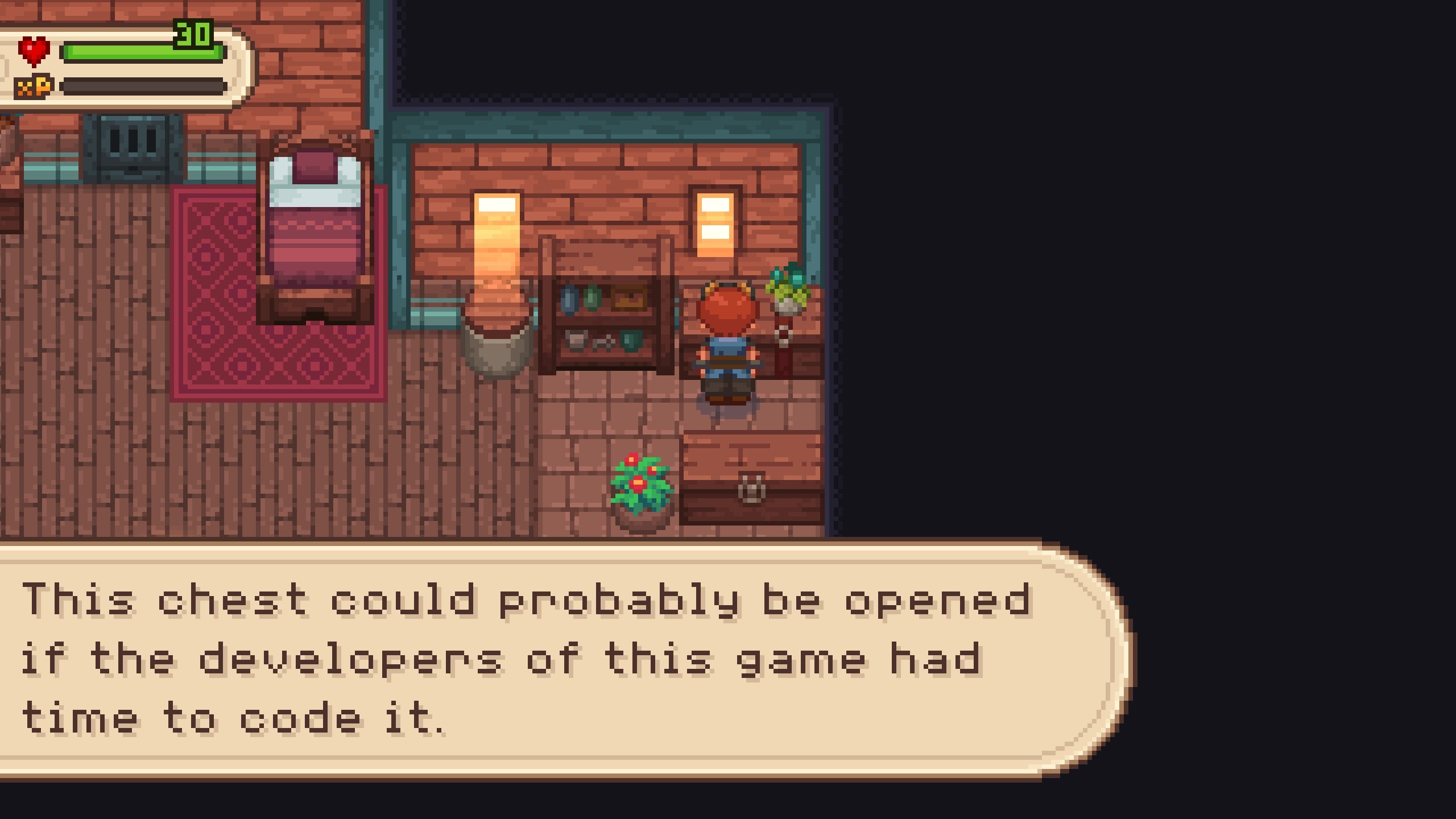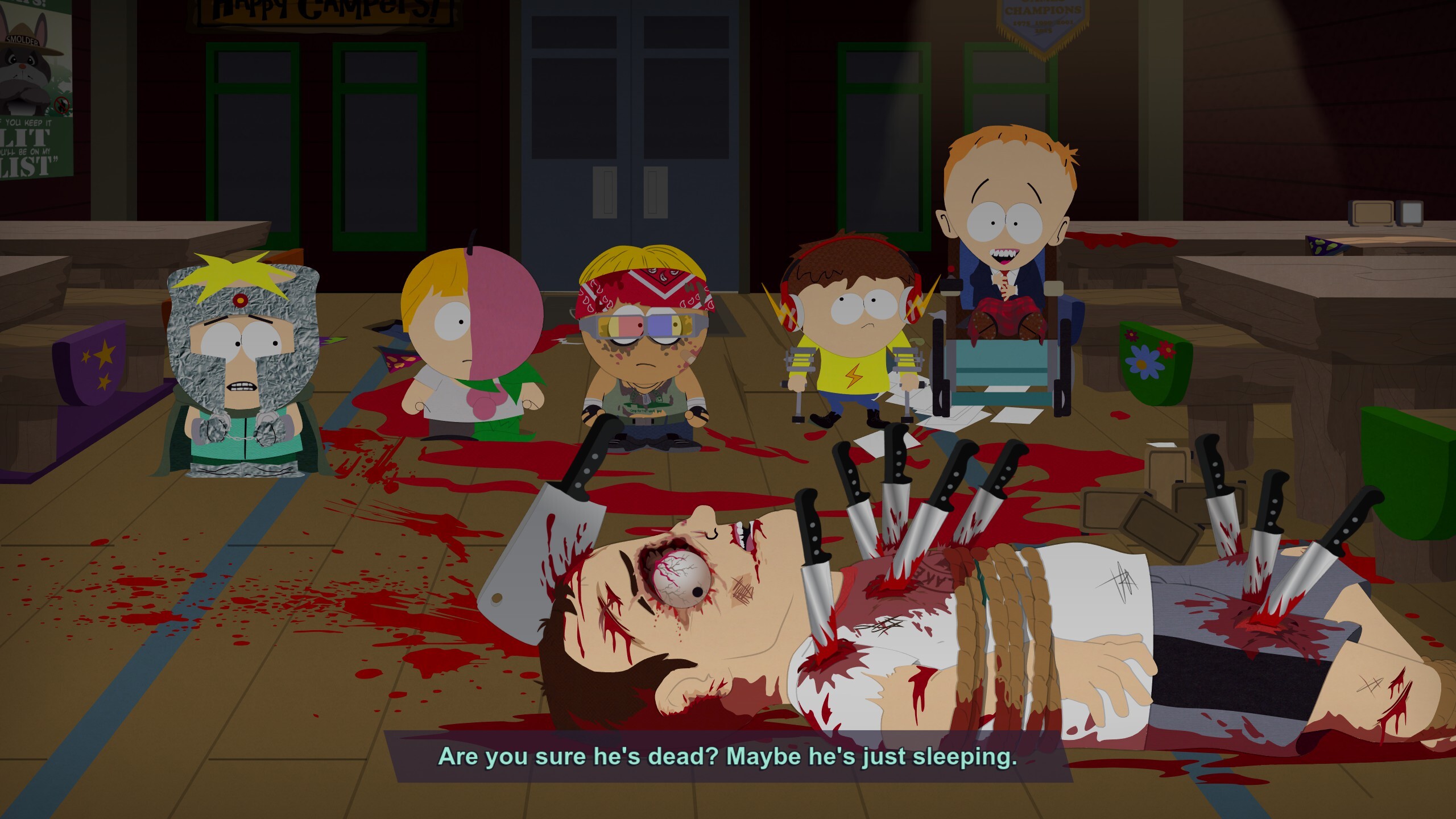It Takes Two has a lot of ideas. Some of them work pretty well! Some of them don't. On average, though, it's fun enough to keep two people entertained for a surprising number of hours.
Through seven chapters, and a handful of levels in each, It Takes Two challenges you and a partner to platforming and puzzling and button-mashy combatting with a wide, continuous variety of mechanics. In a workshop-themed level, one player uses a nailgun to create wall-mounted poles for the other player's hammer to swing on. In a playroom level filled with toys, one player drives a dinosaur-shaped crane to move platforms that the other player jumps around on.
What's great about setups like these, or handcars and paddle-boats with two-person locomotion, or boss fights where one player distracts while the other prepares an attack, is that they're built on cooperation. At its best, the game asks two players to figure out how to help each other, trading assists back and forth on their way to a goal.
And unlike some other, more arcade-y co-op games, It Takes Two - usually - doesn't test the limits of your and your partner's synchronous coordination. The game is much more interested in you having a clear plan than it is in you having perfect timing.
Which is especially good because the movement and camera controls aren't consistent or reliable enough to really support "precision." Missing a target, or missing a jump, tends to feel like the game's fault at least as much as your own.
Fortunately some generous checkpoints help make those failures tolerable. In fact, part of its numerous mechanics' formula for success is that you don't need to develop deep skills in any of them -- because they don't stick around that long.
The low points of It Takes Two are when it's dwelling on an idea for too long, ramping up its complexity, and expecting you to pull off expert moves that ... the game just isn't polished enough to enable.
(The wasp boss is the worst. The worst.)
But It Takes Two generally moves fast enough, and changes itself up frequently enough, that this lack of polish doesn't get in the way. A continuous flow of imaginative environments and fresh gameplay prevents any one thing from wearing out its welcome.
(With a few exceptions. Like that wasp boss.)
Unfortunately this mostly-well-paced gameplay doesn't align with the storytelling, which is really, uh, bad. The premise hints at a meaningful, heavy plot: a squabbling couple's divorce and its emotional impact on their young child, who just wants her parents to be happy again. But as a magical, talking self-help book tries to re-ignite this couple's spark, well, the magical talking book isn't the hardest part to believe.
It's that these two adults going through a surreal cooperative adventure are so incredibly dense, so unrepentant when confronted by their own self-destructive patterns - not communicating with one another, neglecting their partner's needs, ignoring their daughter's emotional health! - that May and Cody rarely acknowledge the damage they've done to themselves, and never agree to change the behaviors that got them here.
I cannot stress this enough: do not attempt to divine relationship advice from It Takes Two. And if you play this with a child, make sure they understand that mature humans don't act the way that these characters do.
So, ignore the story -- enjoy that May and Cody make a good gameplay team, and ignore the terrible family team they make in "real life." And we won't talk about what happened to Cutie the stuffed elephant.
I don't know if I'd agree that It Takes Two is award-worthy, compared to more tightly-focused, technically-polished, or narratively-thrilling titles. But it's a fun ride filled with creative imagination, and by the - admittedly, kinda low - standards of couple-friendly co-op games, there isn't much else that tops it.
Better than: Biped, Ibb & Obb
Not as good as: Pitfall Planet
Lots more content than, but mechanically comparable to: Brothers: A Tale of Two Sons

